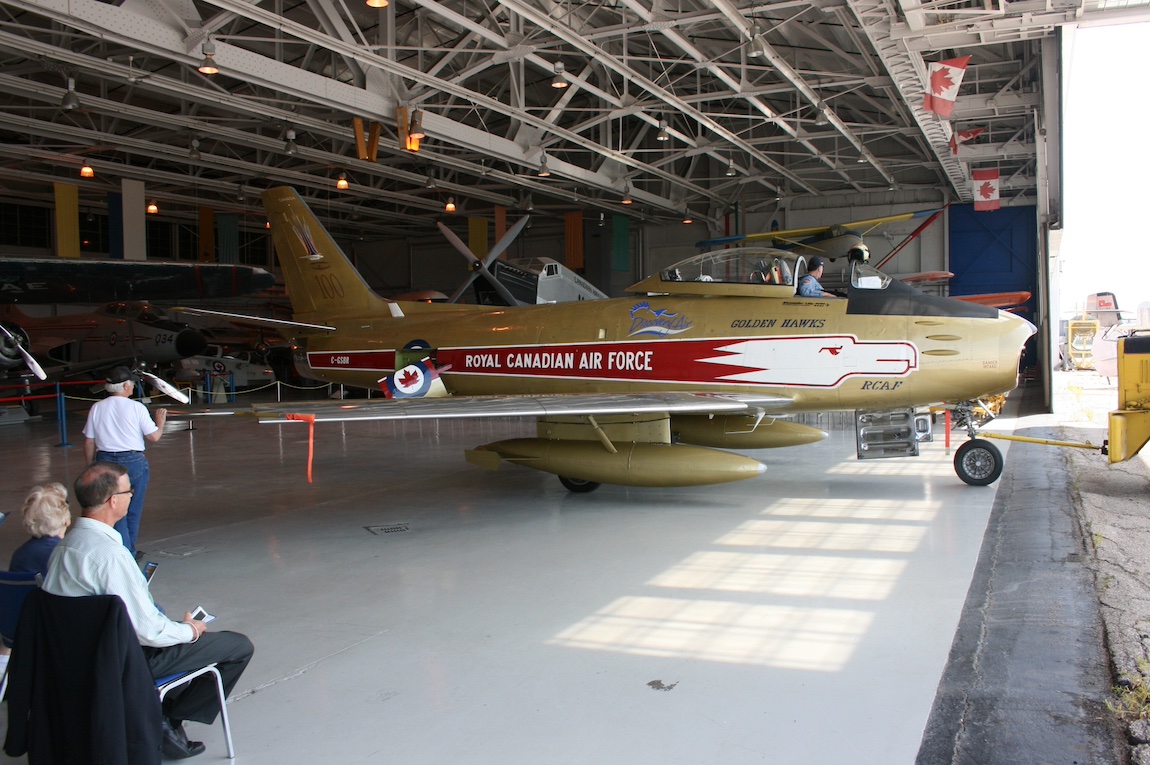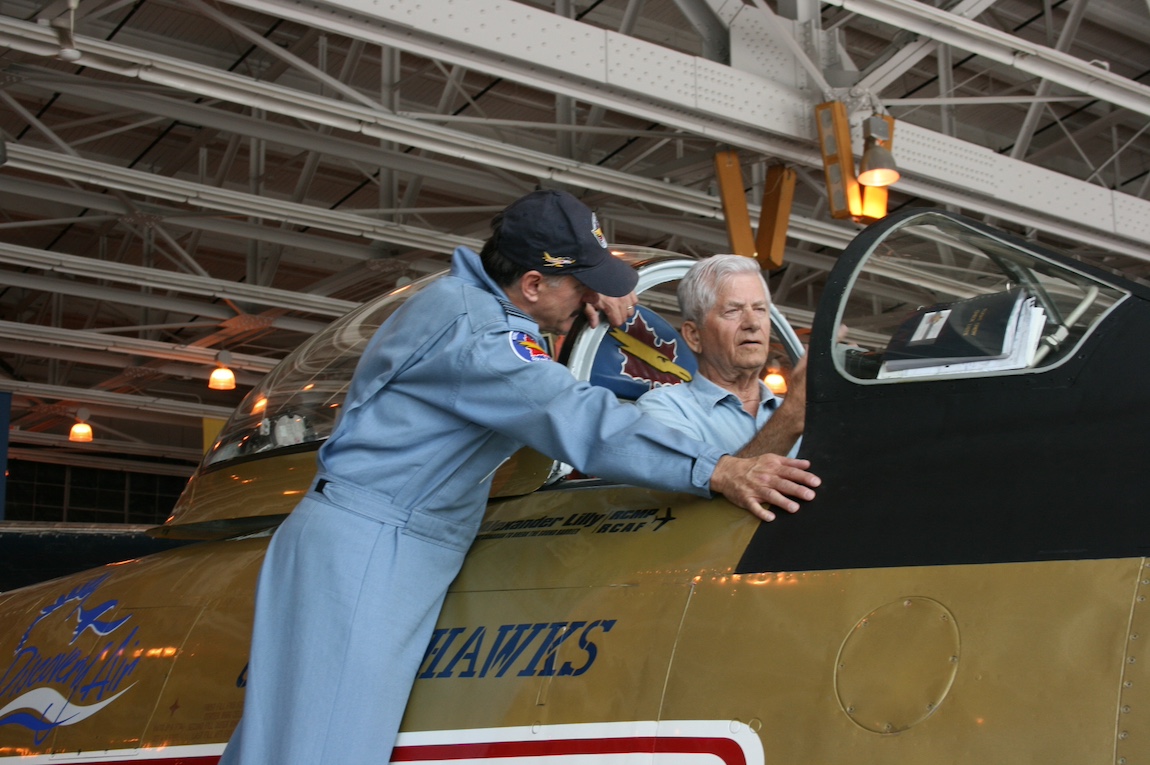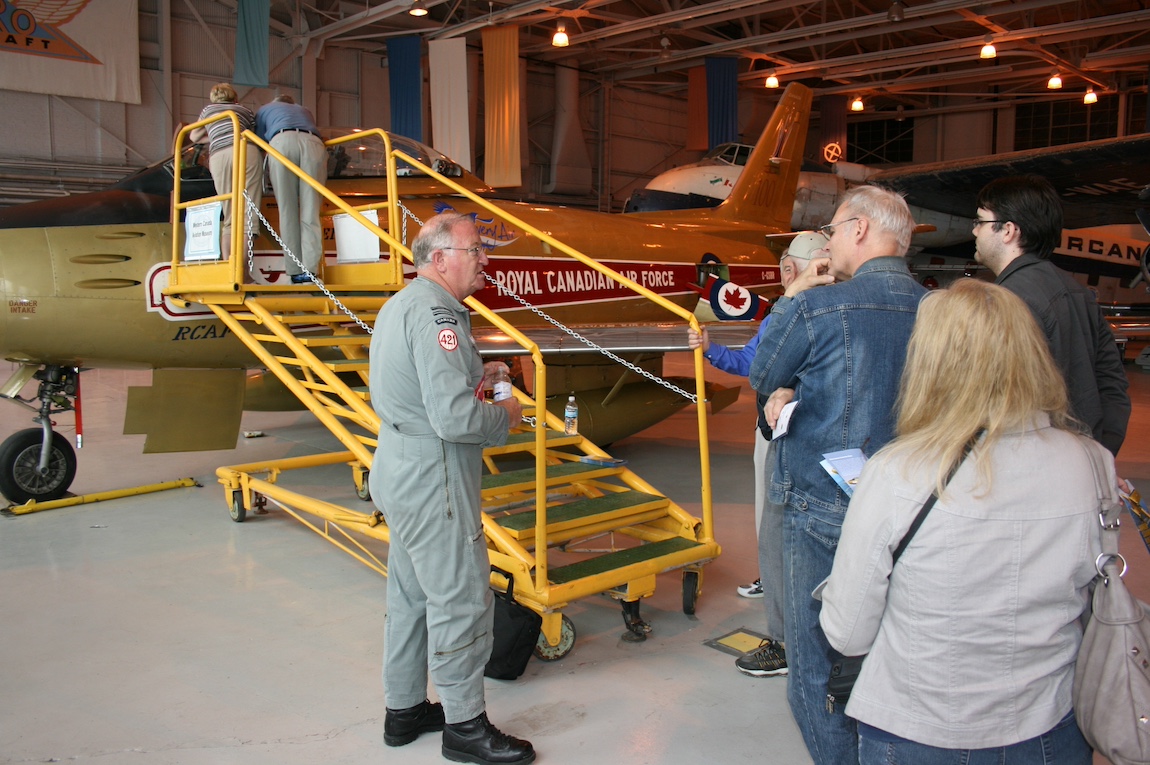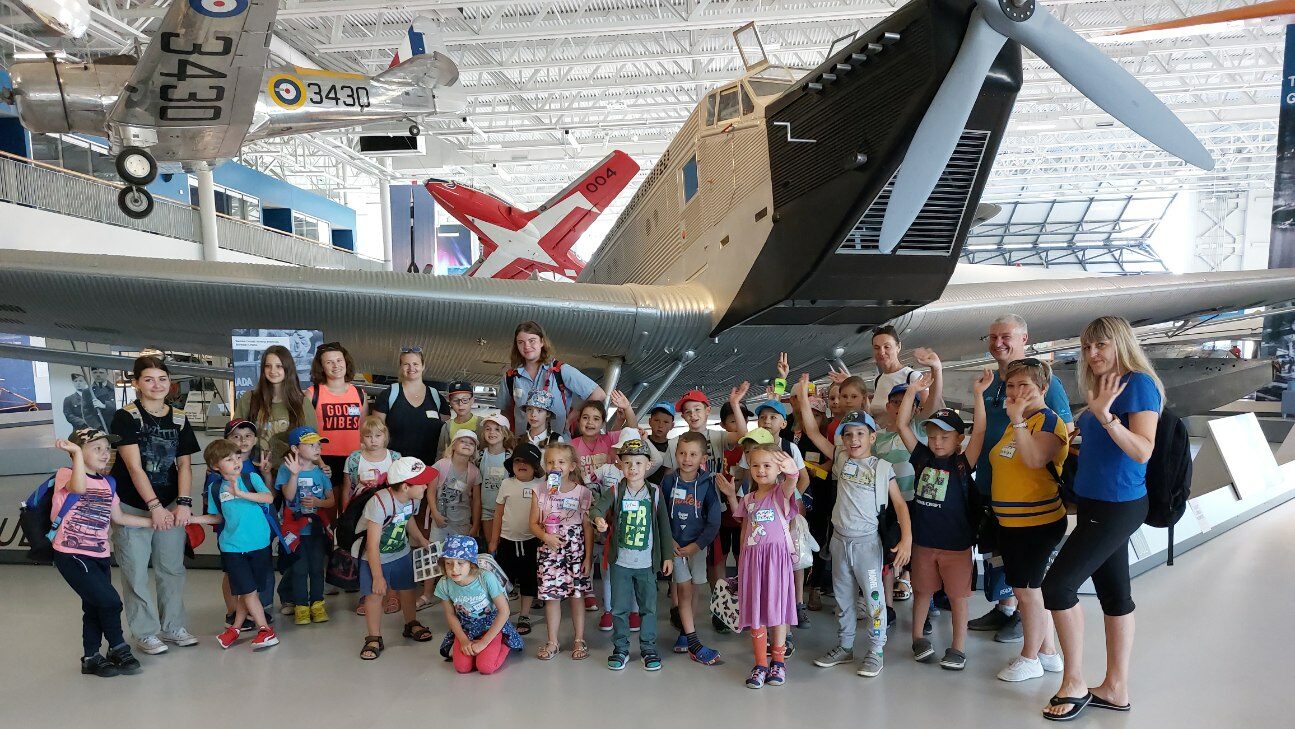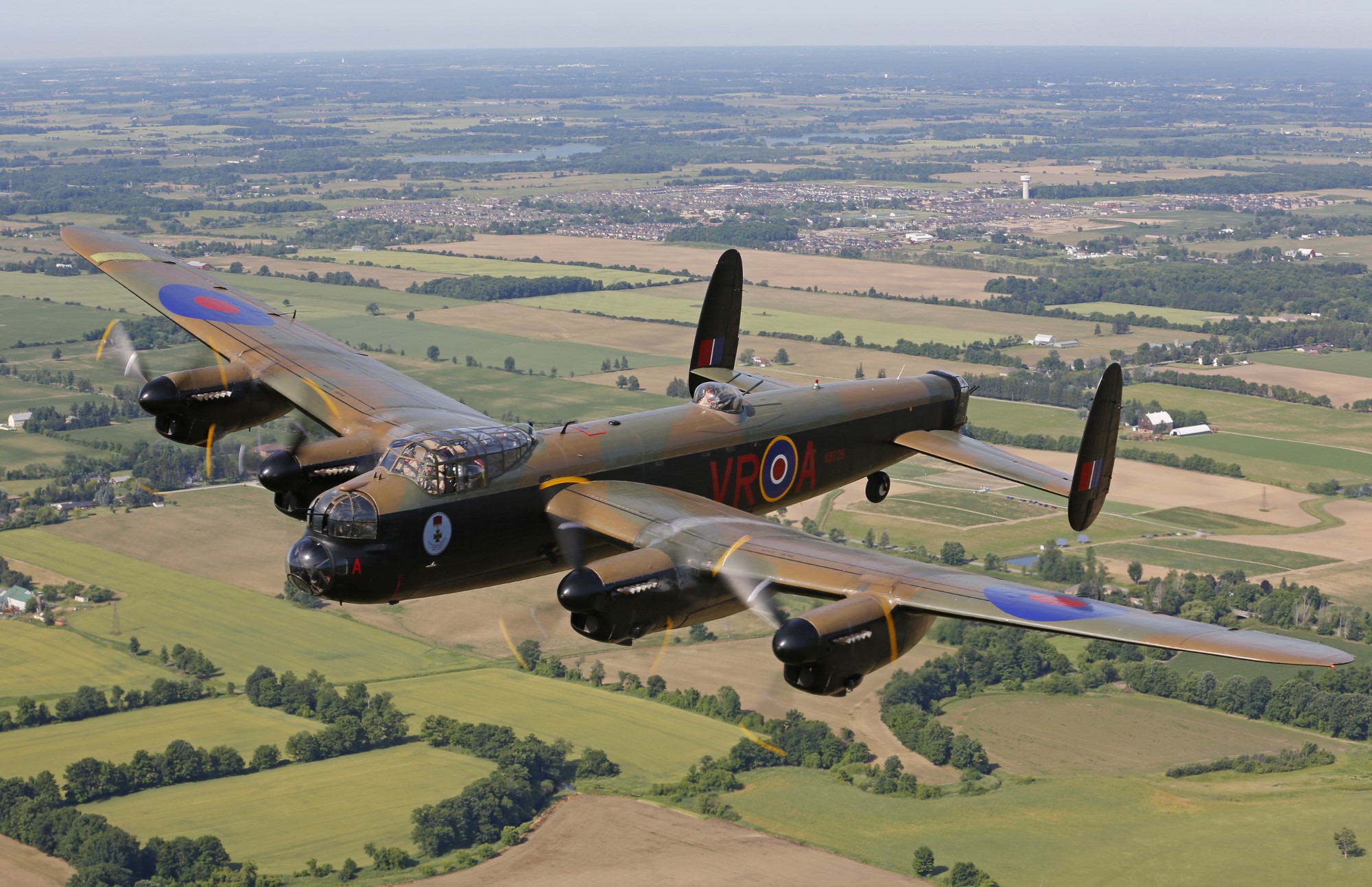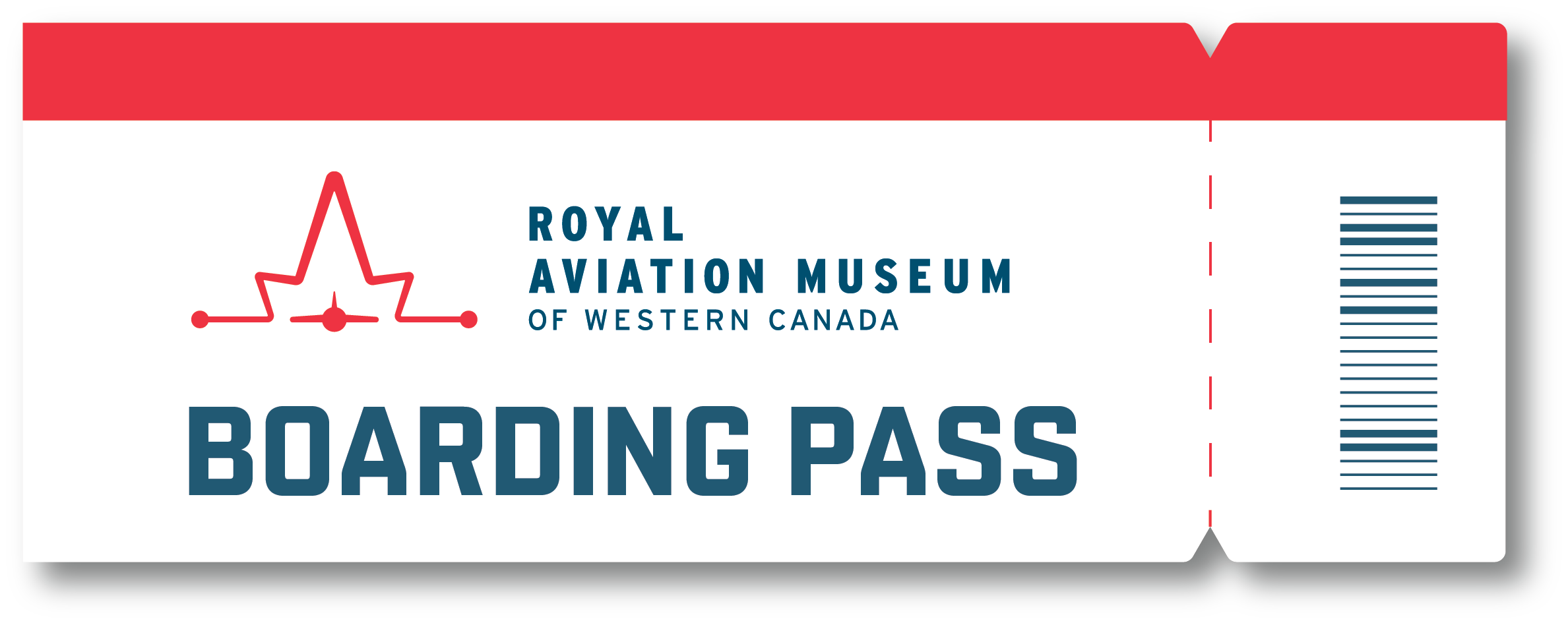January 2, 2024
As work progresses on the restoration of our F-86 Sabre, we’ve been digging through our archives to learn more about its history. Recently, we came across an article from the old Western Canada Aviation Museum blog about what it was like to fly this aircraft.
We’ve also included some background on the Golden Hawks, an aerobatic squadron made up of Sabres, plus photos of a 2011 museum visit from Hawk One.
Read to the end to discover our plans for the Sabre once we complete the restoration!
FLYING THE F-86 SABRE
As any fighter pilot would anticipate, the Sabre is an absolute joy to fly.
Most pilots expressed surprise at how tight the cockpit is. The adage of strapping a fighter to your back is not far off when it comes to the F-86.
The Sabre loves to fly fast, and while she is no match for today’s afterburner-equipped fighters, she accelerates to over 450 knots with little effort or sensation in the cockpit. Yet, she is surprisingly easy to fly – a fighter pilot’s fighter as they say.
Even at an all-up weight of 16,233 pounds, nosewheel rotation occurs at 115 knots and she eagerly leaps into the air at 131 knots with only 2,800 feet of runway behind her. As the jet rapidly accelerates through 200 knots, her leading-edge slats automatically slide closed. Once over 300 knots, the aircraft’s roll rate, even at half aileron deflection is very fast, and dizzyingly so at full deflection. Combining pitch, roll and acceleration rates as she races through the sky, it is readily apparent why the Sabre was so successful as a dog fighter and why she was so revered by those fortunate enough to have flown her.
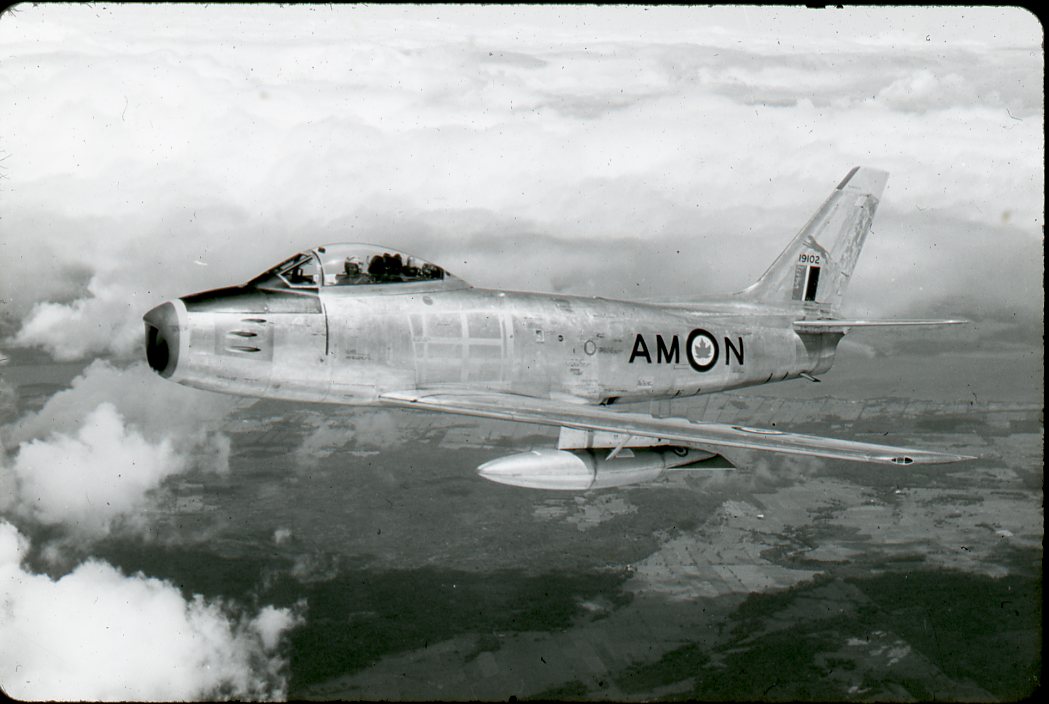
One of the truly amazing technological advances of the Sabre was its leading-edge slats which automatically deploy at slow speeds to improve manoeuvrability.
Mounted on simple rollers, there is no sound or sensation as they extend or retract. This is an invaluable asset in a slow speed dog fight, or while turning base to final. Overhead pitches are nominally flown at typical fighter speeds of 300 knots. After lowering gear and full flap at 185 knots, final turn is flown at a minimum of 150 knots decreasing to 130 on final and 110 over the threshold.
THE GOLDEN HAWKS LEGACY
The manoeuvrability of the Sabre made it ideal for aerobatic demonstrations, and in 1959, the Golden Hawks aerobatic squadron was formed. This team was the RCAF’s contribution to the golden anniversary of flight in Canada.
Under the command of Wing Commander Jake Easton, Squadron Leader Fern Villeneuve and his team flourished. They quickly established themselves as one of the finest aerobatic teams in the world.
Trademarked by their six gold-coloured F-86 Sabre Mk. 5 fighters, the Golden Hawks represented everything glorious about the RCAF and aviation in Canada.
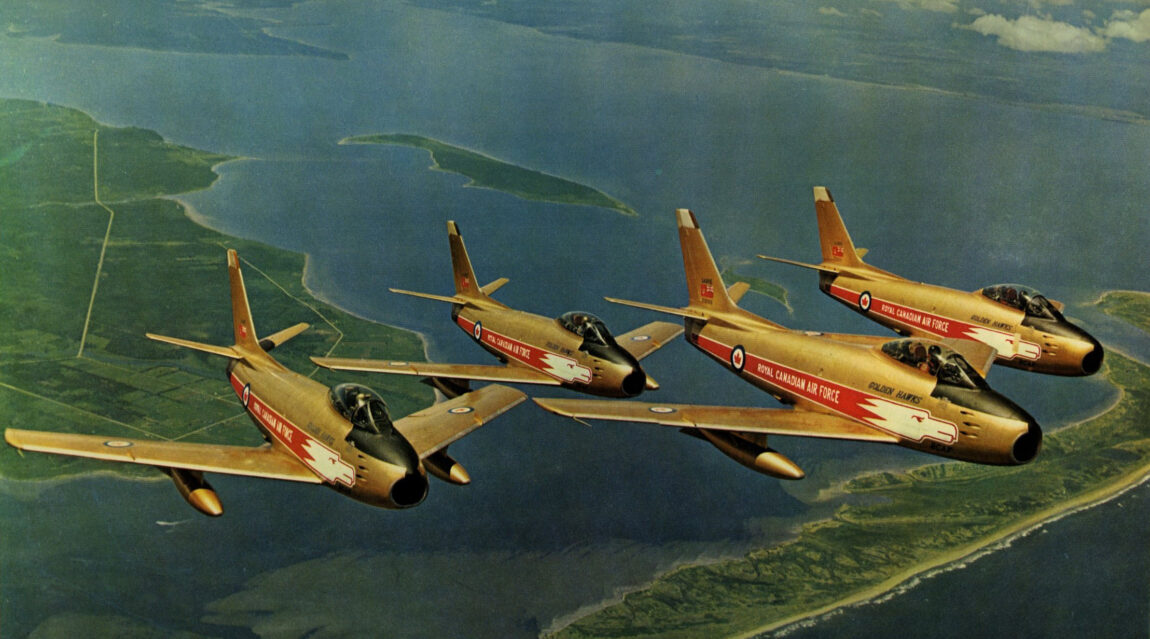
Although originally slated to fly for only one year, the popularity of the Golden Hawks ensured their survival for five full seasons. Budget cuts to national defence sealed their fate on February 7, 1964, as the team practiced for their sixth season.
All told, over 15,000,000 North Americans watched the Golden Hawks weave their aerial magic in 317 shows over five years. They came to symbolize a form of national pride and were a thrilling sight millions of Canadians would cherish and never forget.
RCAF SABRE 23314: ‘HAWK ONE’
Hawk One was created to celebrate the 100th anniversary of powered flight in Canada. Vintage Wings of Canada purchased Sabre C-GSBR from a civilian owner in the United States. The team then restored and repainted the Sabre in Golden Hawks livery and dubbed it, “Hawk One.”
C-GSBR previously served for 16 years in the RCAF under serial number 23314. It was the 1,104th Sabre to come off the Canadair assembly line in August 1954, bearing the RCAF serial number 23314. Built as a Sabre Mk.5, it was one of 1,183 Canadian-built Sabres that were delivered to the RCAF between 1951 and 1957 to equip 12 squadrons in Europe as Canada’s aerial commitment to the defence of Europe in the early days of the Cold War.
In 2011, Hawk One participated in 28 public events and flew in 18 airshows across Canada.
Hawk One also made a couple stops at our museum, then called the Western Canada Aviation Museum, in 2009 and again in 2011.
Visitors were allowed to get up close and personal with the aircraft to learn about it and the rich aviation heritage that helped build our nation.
RESTORED F-86 SABRE MK. 6 SCHEDULED FOR UNVEILING AT RAMWC IN SUMMER 2024
The museum’s Sabre, the last one ever produced by Canadair, is currently under restoration by a team of expert volunteers.
Work is scheduled to be complete sometime this summer, at which time it will be unveiled at a celebration in honour of the museum’s 50th anniversary and the 100th anniversary of the RCAF.
In the meantime, if you’d like to participate in this project, donate today and join our Sabre Squadron! Learn more here.

